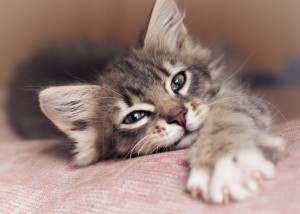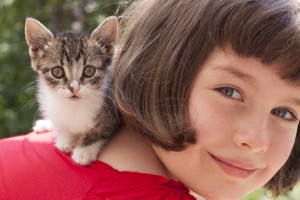 By Daniel Filion, feline behavior consultant at Éduchateur
By Daniel Filion, feline behavior consultant at Éduchateur
February 21, 2016 – Animal Reality is proud to welcome Daniel Filion in its ranks. In joining the team of Réalité Animale, he will sign occasional chronicles. His first one takes an incisive look at some own habits to domestic cats.
Independent Nature
From the outset, we must know that the cat is an animal that stands on its own, while most people think of it as an independent species. It can change from domestic to wildlife living overnight.
If, after having stayed for several years in a house or apartment, it is released in the wild, a cat will have no difficulty getting by. His motor patterns will get over it. Obviously, we do not advocate abandonment of animals, on the contrary. That being said, when a situation demands it, the cat is one of the few animal species that recovers its wild instincts. Most other domesticated animals lose their self-sufficient ability.
To support this claim, a recent study has shown that a cat that has never learned hunting, either with its mother at a very young age or in another context, will eventually develop hunting skills. Will it be as effective as another cat that was taught hunting? No, but that will not stop it from being able to hunt because this ability is innate in him.
Too Affectionate
In another vein, know that very affectionate cats will tend to stick to their masters in order to meet their basic needs. For example, they try to get attention for various reasons: they want food, they need to be secured or yearn for attention to cope with boredom. After a while, this attitude can become maddening. People who must cope with this must try to ignore this behavior, but in the end they cave in. In doing so, the animal understands that the more he will insist, the more he will get what he wants.

Many people tell me that their cat meows at night, they have tried everything to make it quit this habit without success. They stood up, played with it, gave it food and let it go outside. They should not cave in, but stand up to it. A cat acts like a two-year-old child all his life. If we let it acquire bad habits, it will learn very quickly how to manipulate people in its entourage.
Stimulate Your Cat
Most feline behavior problems that I deal with every year are more or less linked to a lack of incentive elements. Many people do not know how to make a cat happy in its environment. Let me explain: a cat is inactive for two-thirds of his life. During the remaining 30%, we must know how to keep it busy. Hunting should occupy at least 10% of its activities.
This motor pattern can be satisfied in many ways. For example, it may have to do a little work to get its food. Cats in the wild spend between 40 minutes and three hours to catch a prey. They should be challenged with interactive bowls. In addition, playing with one’s cat, at least twice a day for 10-15 minutes will enable it to burn energy healthily.
The Leash for Cats
Cats are curious by nature. Usually, they like to go out, yet many people do not want to let them go alone outside, especially in cities, where the sources of stress and dangers are far too numerous compared to the benefits that a cat could find in so doing. The use of a leash will allow you to walk your cat. Like a dog, a cat will get used to it. As proof, almost all my cats walk on a leash.
 Two options are available with the leash: walk your cat or let it walk you. Give each one a try. You will know quickly which suits you best. But first of all, a few precautions are needed before you start. Harness your cat in a small room, so that it will get used to it gradually, and use positive reinforcement in rewarding it with treats, for example. At first, do not walk out the door with your cat on a leash. Take it in your arm, so that it may understand that it does not leave home unless it is in the arms of someone.
Two options are available with the leash: walk your cat or let it walk you. Give each one a try. You will know quickly which suits you best. But first of all, a few precautions are needed before you start. Harness your cat in a small room, so that it will get used to it gradually, and use positive reinforcement in rewarding it with treats, for example. At first, do not walk out the door with your cat on a leash. Take it in your arm, so that it may understand that it does not leave home unless it is in the arms of someone.
All these attentions will provide a better quality of life to your feline. It will not ask more than to live in an enriched and adapted environment. These small details help reduce behavioral problems observed in several domestic cats.
All rights reserved
Like this article? Like us on Facebook.
Photo 2: Dollar Photo Club/Sergey Khamidulin
Photo 3: Dollar Photo Clun/Rihanna
You may also watch ou videos that are subtitled in English.
Click on the icon on the right hand side:
Balinese Cats/Zootherapy and autism/Advertising Video of Realité Animale

